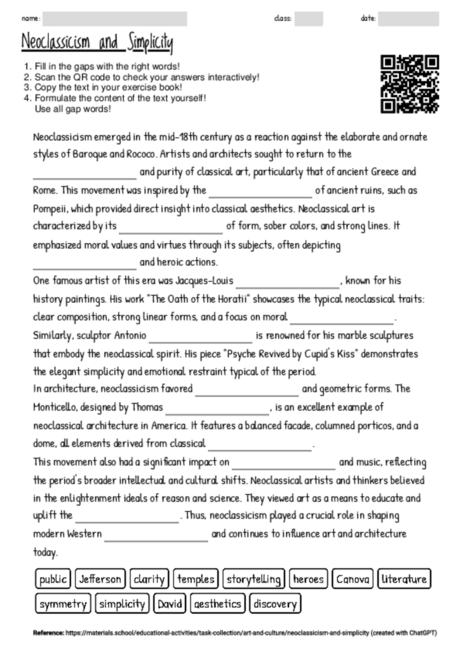Neoclassicism and Simplicity
Cloze texts, like this one on Neoclassicism, are effective for engaging students in learning about historical and cultural topics. They encourage active reading and comprehension skills, as students must focus on the context to identify the missing key terms. The simplicity of the language and short sentences in this text make it accessible for readers aged 12 to 16, aligning with their reading and comprehension levels.
The text covers various aspects of Neoclassicism, including art, architecture, and its broader cultural impact, providing a comprehensive overview of the topic. This breadth ensures that students with different interests – whether in painting, sculpture, or architecture – can all find elements of interest. By identifying the missing words, students are encouraged to think critically about the importance of each term in the context of the era.
Moreover, the use of real historical figures and examples, like Jacques-Louis David and Thomas Jefferson, helps in making the learning experience more tangible and relatable. Students can connect the textual information to real-world examples they may have seen or heard about.
This cloze text can be used in various teaching phases, from introducing the topic to reinforcing learning in later sessions. It serves as an excellent tool for reviewing key concepts and vocabulary related to Neoclassicism. Teachers can also use the text for group activities, fostering collaborative learning and discussion among students.
In summary, this cloze text on Neoclassicism is a valuable educational tool that enhances reading comprehension, critical thinking, and engagement with cultural history, making it an excellent resource for educators and students alike.

